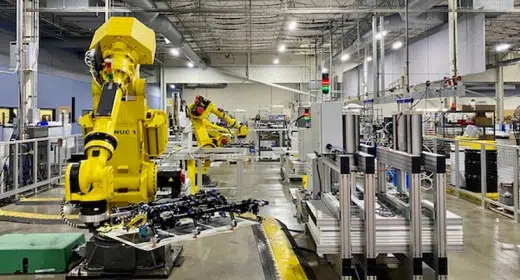by Christopher McFadden: Get ready for a major EV pivot…
An Oregon-based energy storage firm, ESS Inc., has been commissioned to deliver a new form of battery for a project in Spain. The order comprises 17 of ESS’ long-duration warehouse iron flow battery systems for a hybrid project in Spain.
This order contracts ESS to supply the energy storage system to support a solar farm currently under construction. ESS’ innovative system will have a combined capacity of 8 MWh to provide resilience for the local power grid.
“We are 100% committed to energy storage as an essential complement to our expanding portfolio of renewable energy projects,” Pasquale Salza, Head of Long-Duration Storage and Hybrid Systems for Enel Green Power, said. “With this project, we’re going to assess and validate the ESS flow batteries, which we selected due to their right combination of long-duration capacity, long-life performance, environmental sustainability, and safe operation.”
The contract will be delivered in collaboration with the global systems firm Loccioni and engineering firm Enertis.
How does the iron battery work?
According to ESS, their iron battery utilizes iron, salt, and water for the electrolyte to store energy for future use. Liquid electrolytes are circulated to charge and discharge electrons via a process called redox reduction.
The word “redox” is a contraction of the words “reduction,” which represents a gain of electrons, and “oxidation,” or a loss of electrons.
According to ESS, their system “uses the same electrolyte on both the negative and positive sides of the equation, eliminating cross-contamination and degradation. This is why ESS chemistry remains stable for an unlimited number of deep-cycle charge and discharge cycles.”
The technology is, of course, patented and comes with its own control system. It also dispenses with the need for a series of fixed cells or modules, meaning that it has a significantly improved energy storage capacity, and is highly scalable.
This combination helps reduce the risk of fire or explosion from the batteries — which is nice.
Iron-flow batteries are clean, reliable, and cost-effective over the long term, according to ESS. While regular conventional chemical batteries, like lithium-ion, can last up to 7 or 10 years, an iron flow battery should easily be able to last for 20 years or more. Not only that, but it will not degrade in capacity over its lifetime.
This technology is also very sustainable as it doesn’t rely on the use of comparatively rare Earth elements like vanadium or lithium. Both of these, especially the latter, have some very questionable methods of sourcing and refining that can be very detrimental to the environment (and people).
ESS has, in the past, been contracted to deliver their energy storage system for other projects in Pennsylvania, Patagonia, and Germany, among others.
All good news for ESS. What’s more, as announced earlier this month, the special purpose acquisition company ACON S2 Acquisition Corp. announced it was merging with ESS to create a publicly-traded company.









































